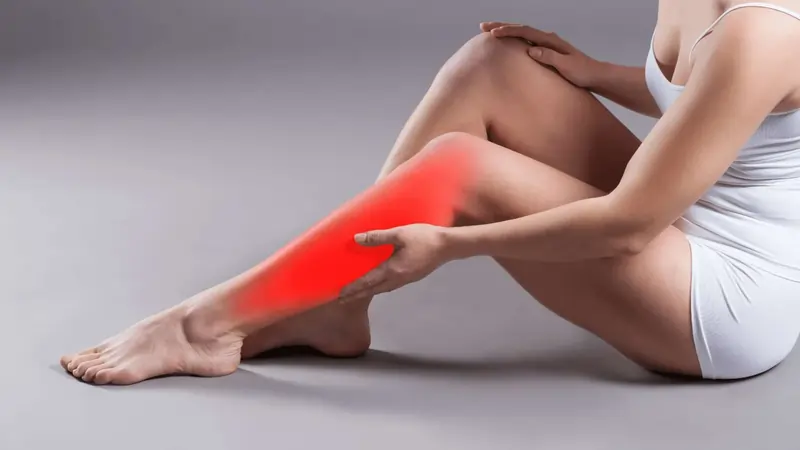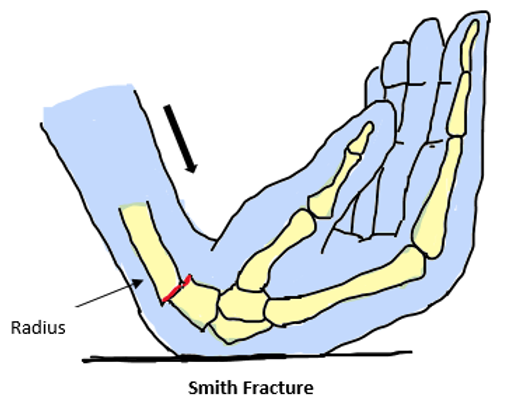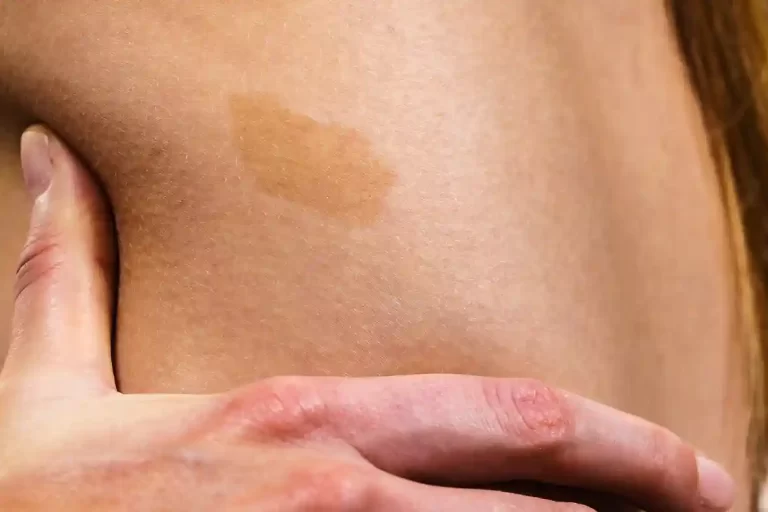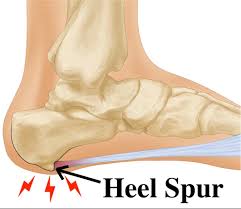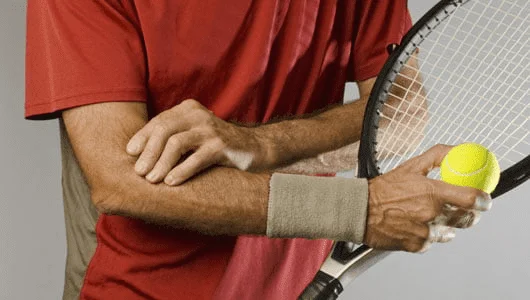Can Knee Pain Cause Shin Pain?
Introduction
Yes, osteoarthritis and patellar tendinitis are the main causes of shin pain that can accompany knee pain. Osteoarthritis-induced loss of cartilage can cause pain to radiate down the leg and even into the shin. Similarly, pain in the tendon that may radiate to the shinbone is a symptom of patellar tendinitis, an injury to the tendon that connects the kneecap to the shinbone.
A collection of disorders known as “shin pain” is caused by misuse of the associated muscles and tendons, and only causes pain in the shins. They define various conditions that cause pain in the front region of the tibia (shinbone). This ailment, which presents as modest lower leg swelling and top-of-shin pain, is frequently caused by overtraining and improper footwear.
A person’s shin splint pain can be described as dull and painful or as severe. But shin pain can also be caused by other things, like a stress fracture, bone bruise, or accident.
An injury to the tendon that connects your kneecap (patella) to your shinbone is known as patellar tendinitis. The patellar tendon works with the muscles in the front of your leg to extend your knee, allowing you to run, jump, and kick. Jumper’s knee, or patellar tendinitis, is most common in athletes who play sports like basketball and volleyball that require a lot of leaping.
- Finding advice from a medical expert is essential for accurate diagnosis and management of shin and knee pain.
- Whether the pain is due to an accident, excessive use, or another condition, it is imperative to treat the underlying cause.
- In the short term, RICE (rest, ice, compression, and elevation) can be useful for managing pain. Physical therapy is usually the first step in treating patellar tendinitis since it helps to strengthen and extend the muscles surrounding the knee.
Knee Injuries and Biomechanics:
- Knee injuries that impact the knee’s alignment and mechanics include meniscus damage and ligament tears.
- During exercises like walking or running, these modifications may change how the leg and foot move, which could put more strain on the shin bones and muscles.
- For instance, a stiff or misaligned knee might make the shin muscles work harder, which can result in shin splints.
The purpose of the article is probably to inform readers about the possible connection between shin and knee pain, to explain the mechanics underlying this relationship, and to provide advice on how to treat or manage pain in either area.
Anatomy Overview: Knee and Shin
The patella (kneecap), tibia (shin bone), and femur (thigh bone) are all connected by the intricate joint known as the knee. As a hinge, it enables bending and extension. The tibia makes up the majority of the shin, which is the bone that extends from the knee to the ankle.
Knee Anatomy
Three bones make up the knee joint:
- Femur (thigh bone).
- Tibia (shin bone).
- Patella (kneecap).
Articular surfaces, also known as articulations, are the points where these bones communicate. Your knee has multiple articulations:
- Patellofemoral: Where your patella meets your femur.
- Tibiofemoral: Where your tibia meets your femur.
- Menisci: The two cartilage-like structures known as the medial and lateral menisci enhance force transfer and absorb shock.
- Ligaments: Ligaments, including the ACL, PCL, MCL, and LCL, provide stability and prevent excessive movement.
- Muscles: The quadriceps muscle, located on the front of the thigh, is a primary knee extensor.
- Articular Cartilage: A smooth, hard substance covering the articulating surfaces of the bones, reducing friction.
- Cartilage receives nourishment, and the joint is lubricated by synovial fluid.
Shin (Tibia) Anatomy
- The tibia connects your ankle to the area directly beneath your knee.
- Shaft: The tibia has a prism-shaped shaft with three surfaces (lateral, medial/anterior, and posterior) and three borders (anterior, medial, and interosseous).
- Tibial Tuberosity: A palpable bump on the anterior surface of the tibia, where the patellar tendon attaches.
Knee joint stability: Avoiding shin pain requires proper knee joint stability. Abnormal knee joint function may lead to increased strain on the lower leg.
Muscle imbalances: Unusual movement patterns that place additional strain on the shins might result from muscle imbalances surrounding the knee.
Incorrect alignment: Disorders such as osteoarthritis in the knee can lead to a misaligned knee joint, which can exacerbate shin pain.
Radiating pain: It might be challenging to identify the precise cause of knee pain when it occasionally travels down the leg.
Causes of knee pain
The ligaments, tendons, and fluid-filled sacs (bursae) that encircle your knee joint, as well as the bones, cartilage, and ligaments that make up the joint itself, can all be impacted by a knee injury.
- ACL injury. During an ACL injury, the anterior cruciate ligament (ACL), one of the four ligaments connecting your shinbone to your thighbone, may tear. Those who play basketball, soccer, or other sports requiring quick direction changes are especially susceptible to ACL injuries.
- Fractures. The patella, also known as the kneecap, is particularly susceptible to fracturing in falls and auto accidents. Additionally, osteoporosis-weakened bones can occasionally result in a knee fracture after a single misstep.
- Knee bursitis. The bursae, which are tiny fluid sacs that cushion the outside of the knee joint and allow tendons and ligaments to move easily across it, can become inflamed as a result of certain knee injuries.
The repeated pressure of running and jumping might cause your shin bone to weaken and become inflamed. The damage might worsen and result in excruciating pain if the bone isn’t given time to mend. Numerous factors, such as beginning a new workout regimen or raising your level of physical activity too rapidly, might cause this kind of recurring tension.
Excessive usage is the cause of shin pain. Overuse of your leg muscles, tendons, or shin bone can result in this disease. The most frequent activity that causes injuries is high-impact, repetitive lower-leg activities. The following circumstances frequently result in shin splints:
- Abrupt shift in activity level, either in length or intensity
- Jogging, particularly uphill. You are more susceptible to shin splints if you are a novice runner.
- Extending the number of training days.
- Stepping up workout intensity or covering more ground.
- Engaging in physical activities that involve a lot of stops and starts, like basketball, dancing, or military training.
How knee pain can cause shin pain:
Given the interdependence of the lower leg and how the muscles and tendons cooperate, knee pain may indirectly result in shin pain. Shin splints or other shin-related pain may result from the leg muscles compensating for or adapting to knee pain that makes it difficult to walk, run, or leap.
- Changes in Gait: Walking or running differently due to knee pain might change how your body distributes weight and increase the pressure on your shin bones and muscles.
- Overtraining: You may attempt to make up for knee pain by overtraining your legs or shins, which can result in overuse issues like shin splints.
- Muscle Imbalances: Shin pain may result from imbalances caused by knee pain, which can make some leg muscles weak or inactive while overusing others.
- Particular Conditions: The patellar tendon, which connects the kneecap to the shin bone, can become painful due to conditions like patellar tendinitis (jumper’s knee), which may result in shin pain.
- Radiating Pain: Knee pain can occasionally travel down the leg, even into the shin.
Conditions that affect both the knee and the shin
Due to the way they are linked in mobility and weight bearing, several conditions can impact both the knee and the shin. Healthline and other medical sources include these as illnesses that can cause pain to radiate from one region to another, overuse injuries, and ligament injuries.
IT Band Syndrome
Certain disorders that affect both the knee and the shin might aggravate or potentially create iliotibial band syndrome, a condition that affects the outer area of the knee and thigh. These include overuse, anatomical issues, and muscle imbalances.
- Muscle imbalances can lead to tight IT bands and possibly knee pain. Weakness in the glutes (butt muscles), hip abductors (muscles that pull the leg away from the body), and abdominal muscles can further increase this risk.
- Bowed Legs (Genu Varum): This ailment causes the knees to be bent inward, which can put more strain on the IT band and perhaps cause knee pain.
- Difference in Limb Length: If one leg is shorter than the other, it may change stride and increase strain on the knee and IT band.
Medial Tibial Stress Syndrome (Shin Splints)
Shin splints, sometimes referred to as medial tibial stress syndrome (MTSS), are a disorder that can produce lower leg pain that occasionally radiates to the knee. Referred pain can result from the anatomical link between the lower leg muscles and the knee joint, however, it mainly affects the shin. Similar symptoms can also be caused by other illnesses that need thorough diagnosis, such as tibial stress fractures and exertional compartment syndrome.
- This widespread disease, which is sometimes caused by overuse or abrupt increases in activity, causes pain along the inner edge of the shinbone. Because the muscles in the lower leg are interrelated, even though the pain is usually restricted to the shin, it can occasionally be felt in the knee.
- A tibial stress fracture is a crack in the shinbone that can also cause pain in the knee, particularly if it happens near the muscles that connect to the knee.
- Exertional Compartment Syndrome: This disorder causes swelling and pressure accumulation in the lower leg’s muscle compartments, which can cause shin and, occasionally, knee pain.
Compartment syndrome
In addition to causing pain and numbness, this pressure may harm blood vessels and nerves, possibly resulting in damage to muscles or nerves. Severe trauma usually causes acute compartment syndrome, but overuse or recurrent activity causes chronic compartment syndrome to develop gradually.
Symptoms
When to see a doctor:
- Persistent pain: If resting or using natural remedies doesn’t make the pain go away.
- Swelling or redness: If you observe redness or swelling in the shin or knee.
Symptoms of a minor injury can include:
- Swelling
- Pain
- Bruising
- A bump
- Bleeding
- Stiffness in the leg
At first, you might only have knee pain when you first start exercising or just after a strenuous workout. The pain gets worse with time and begins to get in the way of your athletic endeavors. Eventually, the pain makes it difficult to perform everyday tasks like getting out of a chair or ascending stairs.
Diagnosis
In addition to examining your lower leg, ankle, and foot, your healthcare practitioner will assess your gait. Your doctor might therefore request a bone scan or magnetic resonance imaging (MRI) scan if they are worried. These tests allow your doctor to determine whether the shin splint has become a fracture as a result of stress by detecting the damage before an X-ray is required.
Physical examination
The knee’s stability, range of motion, and pain location can all be evaluated with a comprehensive physical examination. Additionally, it may measure muscular flexibility and strength, which may be causing shin pain.
Treatment
You must let your muscles and bones recover to alleviate your problems.
- Rest: Take a break from running, sports, and other activities to allow both your muscles and bones to recuperate. For a few weeks or more, you may wish to take it easy and rest. The tissues can mend if you refrain from doing things that make the pain worse.
- Ice: For a few days, massage your shins three to four times a day, each for ten to twenty minutes, with a cold compress. Your quadriceps should be stretched. Repeat three to five times after pulling the foot or heel as close to your buttocks as you can, holding it there for ten to fifteen seconds.
- Pain relievers: Nonsteroidal anti-inflammatory medicines (NSAIDs), which are available over-the-counter (OTC), help reduce pain and swelling. Both shin and knee pain can be managed with ice packs, over-the-counter painkillers, and possibly physical therapy.
- Supplements: Taking 1000–2000 IU of vitamin D3 daily could be helpful. Consult a physician about taking supplements.
- Stretches for shin splints: You may find it useful to gently flex and stretch your lower leg muscles. It can be helpful to perform exercises that increase flexibility and improve the muscles surrounding the knee and shin.
- Increase in activity level gradually: When you do resume an active lifestyle, start cautiously. To lessen the chance that shin splints will recur, gradually increase your activity.
- Supportive footwear and shoe inserts: Orthotics, or shoe inserts, can help patients with flat feet who are experiencing shin splint pain.
Physical therapy
Minimize Your Swelling and Pain
- Put ice on your shins. Apply ice multiple times a day for three days, or until the pain goes away.
- Perform stretches that target the calf and shin muscles.
- Mobilization of soft tissues, with a focus on improving the suppleness of the tissue surrounding your shin. Discuss how much you can take with your healthcare professional.
- Make use of arch supports. Consult your physician or physical therapist about wearing appropriate footwear and about using orthotics or special shock-absorbing insoles inside your shoes.
- Engage in physical therapy. They can employ pain-relieving techniques. You can learn from them how to develop stronger leg muscles.
Prevention
- Avoid playing through your pain. Ice the area and take a break as soon as you get knee pain from exercising.
- Make your muscles stronger. Particularly beneficial are eccentric workouts, which entail extending your knee and then progressively lowering your leg.
- Get better at what you do. When beginning a new sport or using exercise equipment, think about taking classes or getting professional instructions to ensure you’re using your body correctly.
You can lessen your chance of getting shin splints or making them worse, even if you might not be able to avoid them entirely. You can reduce your risk by:
When working out, put on supportive footwear. To support your arches, think about wearing orthotic inserts. To choose the right running shoe or orthotic for your foot type, stop by a running shoe store and talk to someone there. Nonetheless, there are a few methods one can help avoid shin pain due to an injury:
- Using shin padding, shock-absorbing shoes, and exercising caution to avoid overexerting themselves
- Steadily raising the degree of activity.
Avoid running on terrain that is rough, uneven, or mountainous. Think about taking breaks and doing cross-training. Use suffering as a roadmap. Your activities should be reduced until your shin pain subsides. Refrain from trying to ignore pain.
Risk factor
Shin pain can occasionally be caused by uncontrollable factors like age or heredity. Depending on what causes shin pain, different risk factors apply.
The following variables may raise your chance of getting shin pain:
- Excessive physical activity
- Jogging on a track frequently, exceeding 25 kilometers per week, or experiencing an abrupt increase in physical activity
- Sports, flat feet, low vitamin D levels, and very high arches can all cause compartment syndrome, which needs to be managed immediately if it develops after trauma.
Takeaway
There is a connection between shin and knee pain. Pain that radiates from the knee into the shin can be caused by conditions such as patellar tendinitis. Furthermore, biomechanical problems and knee injuries can change the way the leg moves, which may result in shin splints or other shin pain disorders.
- Generally speaking, if someone gets shin pain that isn’t caused by shin splints, they won’t need to see a doctor, and the ailment will typically recover with minimal attention.
- Anyone with any concerning symptoms should speak with their physician.
FAQs
Can shin pain be relieved by walking?
Yes, however, you need to change the way you walk to avoid worsening your shin pain. Increasing your walking endurance is a crucial step in the recovery process. It gets your wounded shin ready to run again.
Which vitamin is the cause of shin pain?
Especially when shin splints are involved, a vitamin D deficit can exacerbate shin pain. A vital component of bone health, vitamin D can influence bone density and raise the risk of disorders like shin splints, which cause the shin bone to be repeatedly stressed.
How can shin splints be lessened?
Focus on resting, using ice, and taking over-the-counter painkillers like ibuprofen to lessen shin splints. Wearing supportive shoes with arch support and gradually increasing activity levels are also crucial for prevention and recuperation.
Why do my shins hurt when I don’t work out?
Even in the absence of exercise, shin pain can result from several conditions, such as bone bruising, stress fractures, and shin splints (Medial Tibial Stress Syndrome). These disorders, which frequently impact the front or inner side of the shinbone (tibia), can cause pain and inflammation in the lower leg.
How serious is shin pain?
Self-care techniques like rest, ice, and painkillers can often help treat shin pain, which is not always a serious condition. But it’s crucial to know when shin pain could be a sign of something more serious, like a stress fracture, which can call for more expert treatment.
What is the source of shin pain?
Pain may result from inflammation of the muscles, tendons, and thin tissue layers surrounding the shinbones caused by this repetitive activity. Shin splint risk may be increased by certain disorders, including osteoporosis, vitamin D insufficiency, and irregular foot arches.
Why does my shin hurt so much?
Usually, strain and infection surrounding the shin bone cause lower leg pain associated with shin splints. Athletes frequently suffer from shin splints as a result of repeated shin trauma. Resting and applying ice to the sore spot are two ways to treat shin splints.
Reference
- Haghighi, A. S. (2023, November 23). 7 causes of shin pain or aching shin bone. https://www.medicalnewstoday.com/articles/shin-pain-not-shin-splints#pagets-disease-of-the-bone
- Shin Splints. (2025, March 19). Cleveland Clinic. https://my.clevelandclinic.org/health/diseases/17467-shin-splints
- Shin splints – self-care: MedlinePlus Medical Encyclopedia. (n.d.). https://medlineplus.gov/ency/patientinstructions/000654.htm
- Haghighi, A. S. (2023b, November 23). 7 causes of shin pain or aching shin bone. https://www.medicalnewstoday.com/articles/shin-pain-not-shin-splints#summary

